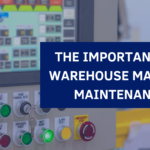
Automated Pallet Inversion: A Streamlined Solution for the Packaging Industry
In the world of corrugated packaging, accurate printing and die-cutting are essential to ensure the quality of the final product. Traditionally, this process involved manual flipping of small stacks of boxes, which was not only inefficient but also posed risks to the employees, such as carpal tunnel issues. Recognizing the need for improvement, two plants at Graphic Packaging, a prominent corrugated packaging manufacturer, sought a solution to automate the pallet inversion process.
Initially, standalone machines were introduced to replace the manual task. However, this approach presented its own set of challenges. Coordinated forklift movements were necessary to transport the printed material to the machine for inversion. Moreover, the slippery and unstable nature of corrugated packaging made it difficult to move over long distances, requiring additional measures like stretch film or banding, which further complicated the process.
To address these issues and improve the overall process, several considerations were taken into account. These included eliminating the need for banding and stretch film prior to inversion, reducing the number of touches and movements by forklifts throughout the plant, and implementing a fully automatic system that could invert the loads without the need for an operator.
The key to a successful pallet inversion system lies in ensuring a stable load. With this goal in mind, automated solutions were developed to provide stability for the product during transfer between pallets, minimizing any potential shifting that could affect gluing and die-cutting processes. Depending on the specific situation, the product would either move from one pallet to another or travel down a conveyor on a slip sheet, requiring inversion without the support of a pallet.
To achieve stability, a gripping system was incorporated into the pallet machine, allowing it to grip both sides of the load securely during inversion. This ensured a smooth transfer of the product to the bottom pallet, while the pallet on top could be reused for the next load. Special attention was given to loads with slip sheets to prevent any shift during compression.
To optimize the machine’s operation and prevent empty cycles, a folding side wall was developed. This wall selectively allowed products to pass through depending on whether inversion was required or not. For loads requiring inversion, the walls would fully extend to stop the load while the machine completed the inversion process. Once done, the walls would open up, allowing the product to continue its journey. For loads that did not require inversion, the wall remained folded, enabling the product to pass through seamlessly.
The implementation of these automated solutions resulted in increased productivity and reduced employee headcount for the customer. The fully automatic system proved crucial for the corrugated packaging industry, especially during the pandemic when minimizing human contact was essential.
At Cherry’s Industrial Equipment, we are committed to helping companies achieve their full productivity potential. Our selection of pallet inversion systems offers a range of solutions to meet your specific needs. Whether you browse our online catalog or discuss a custom solution with our team, we are here to assist you. Contact us today to learn more about our pallet inversion systems and how they can benefit your facility.






